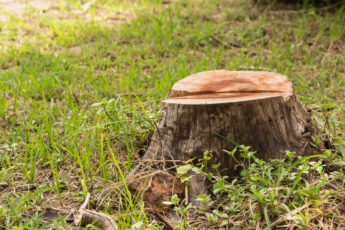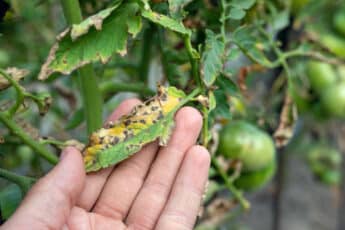Like all living organisms, plants need certain nutrients to grow, thrive, and reproduce. When plants don’t get enough of these essential nutrients, they exhibit specific symptoms, like humans do when they lack vitamins and minerals. Recognizing these symptoms and understanding how to address them is crucial for anyone interested in gardening, farming, or maintaining healthy plants. This article will explore the common nutrient deficiencies in plants, their symptoms, and effective solutions.
What are nutrient deficiencies in plants?
Plants require a variety of nutrients to survive. Air provides carbon, hydrogen and oxygen, but the rest of the plant mainly relies on soil or additional nutrients. The N-P-K ratio on fertilizer labels represents nitrogen, phosphorus and potassium as essential macronutrients. Plants need these three substances in greater quantities than any other. Secondary macronutrients include calcium, magnesium and sulfur. Equally important, smaller microelements such as iron and zinc are required.
Nutrient deficiencies occur when something prevents the plant from getting enough of one or more nutrients for photosynthesis and healthy green leaves. Plants’ nutrient requirements vary depending on their stage of growth. Deficiency occurs when a nutrient is missing or insufficient in the soil, growing medium, or solution. However, it can also appear when nutrients are plentiful, but plants cannot use them regularly.
Poor growing conditions, such as insufficient watering, root damage and drainage, can limit the plant’s ability to absorb nutrients. However, variations in soil pH can prevent regular nutrient absorption. Some nutrients become trapped and unavailable when pH deviates from the ideal zones for various plants. Plants, for example, get the most iron from acidic soils. Even if iron is present in the soil, excessive alkalinity can prevent iron from being properly absorbed.
Macronutrients: The Essential Elements
Nitrogen (N)
Symptoms:
- Yellowing leaves: Primarily, older leaves turn yellow (chlorosis) while newer leaves remain green.
- Stunted growth: Reduced overall plant size and weak stems.
- Poor fruit development: Smaller fruits and delayed fruiting.
Solutions:
- Fertilizers: Use nitrogen-rich fertilizers such as ammonium nitrate, urea, or composted manure.
- Crop rotation: Include leguminous plants like beans and peas, which can fix atmospheric nitrogen in the soil.
- Organic matter: Add compost or well-rotted manure to the soil to increase nitrogen content.
Phosphorus (P)
Symptoms:
- Dark green or purplish foliage, Especially on the undersides of leaves.
- Delayed maturity: Slower development and late flowering or fruiting.
- Weak root system: Poor root development.
Solutions:
- Phosphate fertilizers: Use bone meal, rock phosphate, or superphosphate.
- pH adjustment: Ensure soil pH is between 6.0 and 7.0 for optimal phosphorus availability.
- Organic amendments: Incorporate compost or manure to improve phosphorus levels.
Potassium (K)
Symptoms:
- Yellowing leaf edges: Margins of older leaves turn yellow or brown.
- Weak stems: Plants are more prone to disease and have weaker stems.
- Poor fruit quality: Fruits may be small and less flavorful.
Solutions:
- Potassium fertilizers: Apply potassium sulfate or muriate of potash.
- Wood ash: Wood ash is an organic source of potassium.
- Balanced fertilization: Ensure a balanced application of N-P-K fertilizers.
Secondary Nutrients: Supporting Growth
Calcium (Ca)
Symptoms:
- Blossom end rot: Common in tomatoes, peppers, and cucumbers.
- Distorted new growth: Young leaves are often crinkled and deformed.
- Poor root development: A weak root system leads to poor plant health.
Solutions:
- Lime: Apply lime to acidic soils to increase calcium levels.
- Gypsum: Use gypsum to add calcium without affecting soil pH.
- Foliar sprays: Apply calcium nitrate as a foliar spray for immediate uptake.
Magnesium (Mg)
Symptoms:
- Interveinal chlorosis: Yellowing between the veins of older leaves.
- Leaf drop: Premature shedding of older leaves.
- Weak growth: Stunted growth and reduced yield.
Solutions:
- Epsom salts: Dissolve in water and apply as a foliar spray or soil drench.
- Dolomitic lime: Use to increase magnesium in acidic soils.
- Organic matter: Incorporate compost or manure to improve magnesium availability.
Sulfur (S)
Symptoms:
- Uniform yellowing: Entire plant or younger leaves turn yellow.
- Thin stems: Weak and spindly growth.
- Reduced growth: Overall stunted growth and poor development.
Solutions:
- Sulfur-containing fertilizers: Use ammonium sulfate or gypsum.
- Organic amendments: Incorporate compost, manure, or elemental sulfur.
- Balanced fertilization: Ensure sulfur is included in your fertilization regimen.
Micronutrients: The Vital Trace Elements
Iron (Fe)
Symptoms:
- Interveinal chlorosis: Yellowing between veins of new leaves while veins remain green.
- Poor growth: Stunted growth and pale colouration.
- Leaf drop: Premature shedding of young leaves.
Solutions:
- Iron chelates: Apply as a soil drench or foliar spray.
- pH adjustment: Ensure soil pH is between 5.0 and 6.5 for optimal iron availability.
- Organic matter: Add compost to improve iron availability.
Zinc (Zn)
Symptoms:
- Interveinal chlorosis: Yellowing between veins of new leaves.
- Reduced leaf size: Smaller, distorted leaves.
- Poor fruit set: Reduced flowering and fruit development.
Solutions:
- Zinc sulfate: Apply as a soil amendment or foliar spray.
- Organic matter: Incorporate compost or manure to improve zinc availability.
- pH adjustment: Ensure soil pH is within the optimal range for zinc uptake.
Manganese (Mn)
Symptoms:
- Interveinal chlorosis: Yellowing between veins of new leaves.
- Necrotic spots: Dead spots on leaves.
- Poor growth: Stunted growth and reduced yield.
Solutions:
- Manganese sulfate: Apply as a soil amendment or foliar spray.
- pH adjustment: Ensure soil pH is optimal for manganese uptake.
- Organic matter: Add compost to improve manganese availability.
How to prevent nutrient deficiency in plants?
Nutritional imbalances are no exception to the rule that the best defence is a strong offence. Food toxicity or deficiency can be most effectively treated through prevention.
Preventing Plant Nutrient Deficiencies
Untidy soil needs more nutrients. Gardeners and farmers can keep soil healthy by preventing soil compaction and replenishing depleted nutrients. To prevent soil compaction, avoid walking or driving past garden beds. Provide easy navigation. Rain can break down bare soil, so cover it with green manure or mulch.
Nutrients must be replaced after harvest. The easiest way is to use biological matter. Organic materials include compost, manure and dead plants. Because different plants require different amounts of each nutrient, companion planting and crop rotation are additional methods to address nutrient deficiencies. Glyphosate and other pesticides reduce plants’ nutrient uptake. When weeds and insects are present, protecting plants from pesticides is difficult. Pesticides should be avoided to prevent vitamin deficiencies.
Preventing Nutrient Toxicities
When fertilizers are added to soil, they can harm plant growth. Under-fertilization is one way nutrients get into the soil. However, mining and excessive traffic can increase levels of nutrients and pollutants. Some people don’t know that organic pesticides can cause food poisoning. Copper-based fungicides can cause copper to accumulate in the soil. Before using the product at home, read the instructions and understand any possible side effects.
While plant nutrient deficiencies can be frustrating, they can usually be corrected. Check the soil, monitor the pH level and add water if necessary. Follow the instructions to ensure you use the correct amount of organic fertilizers and additives.
Conclusion
Understanding plant nutrient deficiencies and symptoms is essential for maintaining healthy and productive plants. By recognizing the signs early and applying appropriate solutions, gardeners and farmers can ensure their plants receive the nutrients they need to thrive. Regular soil testing, balanced fertilization, and proper soil management practices prevent nutrient deficiencies and promote robust plant growth.
Feel free to reach out to Greenwood Tree Company with any questions or comments. Share your experiences and tips on dealing with plant nutrient deficiencies in the comments below!







